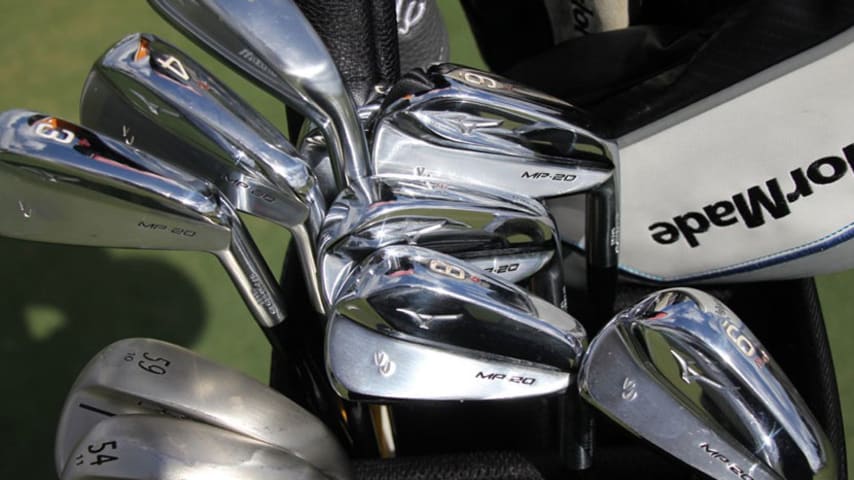The inside story on Vijay Singh’s unique Mizuno irons at The Honda Classic
3 Min Read

Written by GolfWRX
Vijay Singh will go down as one of the hardest working golfers of all time. In addition to his work ethic, the Fijian is also known on the PGA TOUR for his attention to detail when it comes to his golf clubs—especially his irons. This week at The Honda Classic, his unique taste for specific iron specs is on full display with his Mizuno MP-20 blades, that have a secondary number stamped above the club's assigned number.
To get more information about the reason for the double-stamped soles on Vijay's irons, we talked to Jeff Cook, head of Mizuno's PGA TOUR operations, for the behind-the-scenes information.
"Vijay had previously used our MP4 irons, and the one thing he wanted to see with the MP20s was more bounce. So what we have done is, for example, taken a 9-iron which is standard at 42 degrees of loft and bend it to 45 to make it his pitching wedge. By doing this we have added three degrees of bounce and created slightly less offset in the heads."
"This relationship works up the entire set with the 8-iron playing like the 9-iron, 7 like the 8 and so on up the set. By doing this we gain bounce (versus the standard specs) and our technician Kyle stamps the clubs with the new numbers and paints them to make sure there's not a mistake made in club selection."
Now, bounce is something you normally only hear about when discussing wedges, but like any club that has to travel through the ground, bounce and sole design play a big factor in how irons will perform for any specific player. Vijay Singh, for example, has a steep swing and takes larger divots than most. Without enough bounce, his irons wouldn't get through the ground as efficiently, which would result in poor ball flight and inconsistent contact.
"Bounce" is a term most golfers have heard, but in terms of what it "is," bounce is the relationship between the leading (front edge) of the clubs sole and the trailing (back) edge and is assigned a value based on the angle relative to a plane perpendicular to the shaft.
A picture is worth 1,000 words here.
From a club building perspective, the relationship of loft to bounce is one to one when bending; for every degree of loft added you add a degree of bounce, and for every degree taken off you will also lose a degree of bounce.
Bending clubs for loft and to add or decrease bounce is no different than changing the loft on an adjustable driver or fairway wood and is 100 percent conforming to the Rules of Golf. Bending clubs is common practice for players looking to finetune club specs from driving irons to putters, it's just that we don't see it taken to such an extreme too often.
So, now you understand what happens when Jeff Cook says they take Singh's "9-iron, which is standard at 42 degrees of loft, and bend it to 45 to make it his pitching wedge."
... and why Vijay Singh may be the only player in The Honda Classic field with two numbers stamped on the soles of his irons.





